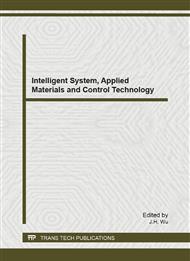p.125
p.129
p.133
p.137
p.141
p.146
p.150
p.154
p.160
An Efficient Method for Preparing Carboxymethyl Chitosan by the Activation of Chitosan
Abstract:
To improve carboxymethylation reaction, chitosan as reactant was activated to change its morphology and compact structure. The crystallization properties of chitosan before and after activation were characterized by X-ray diffraction analysis. Different preparation methods were compared using activated, powdery or flake chitosan as reactants, respectively. And the influences of reaction time and temperature on the yield, the intrinsic viscosity and the degree of substitution of carboxymethyl chitosan were also investigated. We found that, the activation treatment changed the crystallization properties of chitosan, which greatly accelerated the subsequent carboxymethylation reaction; and higher yield of carboxymethyl chitosan with considerable intrinsic viscosity was obtained under the reaction conditions of a shorter time and a milder temperature.
Info:
Periodical:
Pages:
141-145
Citation:
Online since:
January 2013
Authors:
Keywords:
Price:
Сopyright:
© 2013 Trans Tech Publications Ltd. All Rights Reserved
Share:
Citation:


